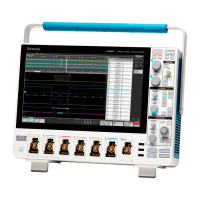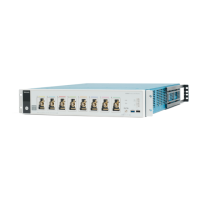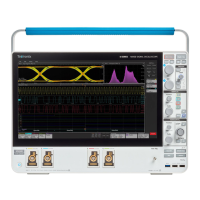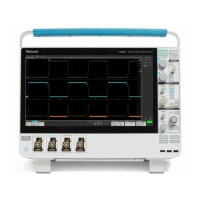position is 50 percent, then the trigger point is in the middle of the waveform record. When horizontal delay is on, the time from the
trigger point to the horizontal reference is the horizontal delay
.
Interpolation
Y
our instrument can interpolate between the samples it acquires when it does not have all of the actual samples it needs to fill the
waveform record. Linear interpolation computes record points between actual acquired samples by using a straight line fit.
Sin(x)/x interpolation computes record points using a curve fit between the actual values acquired. Sin(x)/x interpolation is the default
interpolation mode because it requires fewer actual sample points than linear interpolation to accurately represent the waveform.
Acquisition modes
Acquisition is the process of sampling an analog signal, converting it into digital data, and assembling it into a waveform record, which
is then stored in acquisition memory. The acquisition mode determines how the waveform record points are calculated from the sampled
waveform data.
How the acquisition modes work:
Acquisition mode
Sample mode retains the first sampled point from each acquisition
interval. Sample is the default mode. The instrument does no post
processing of the acquired samples in this mode.
Peak Detect mode retains the highest and lowest values of all the
samples in each acquisition interval. This mode only works with
real-time, noninterpolated sampling and is useful for catching high
frequency glitches.
High Res mode applies unique FIR filtering based on the current
sample rate. This FIR filter maintains maximum bandwidth possible
for that sample rate while rejecting aliasing. The filter removes
noise from the oscilloscope amplifiers and ADC above the usable
bandwidth for the selected sample rate. Implementation of the filter
in hardware, ahead of the trigger and storage, reduces trigger jitter
and enables Fast Acq while in High Res mode.
Table continued…
Waveform acquisition
234
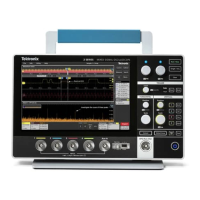
